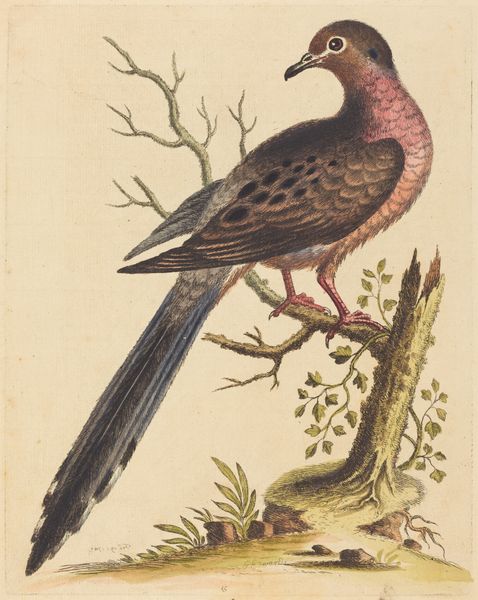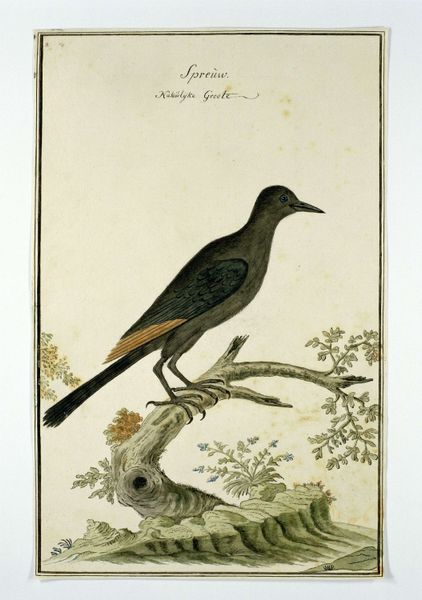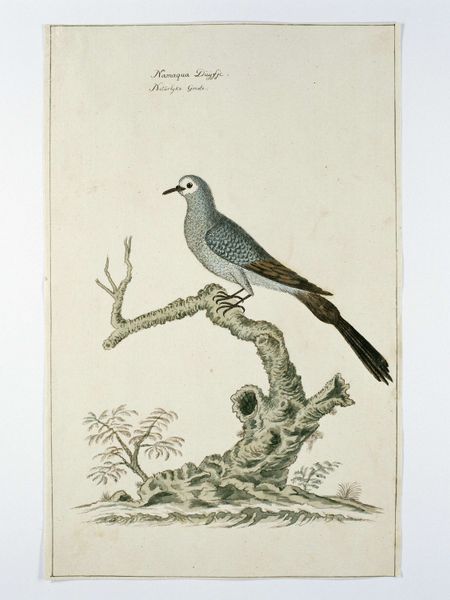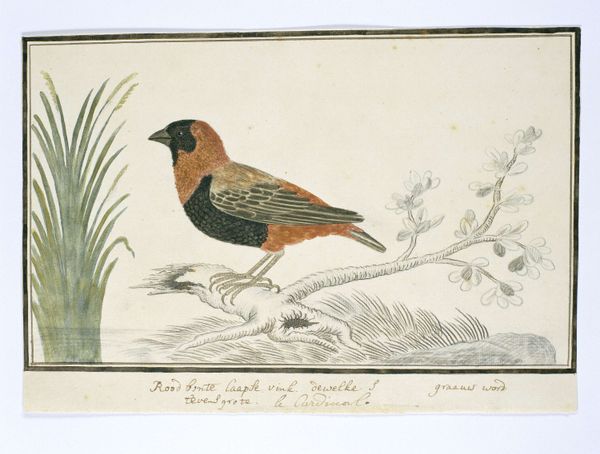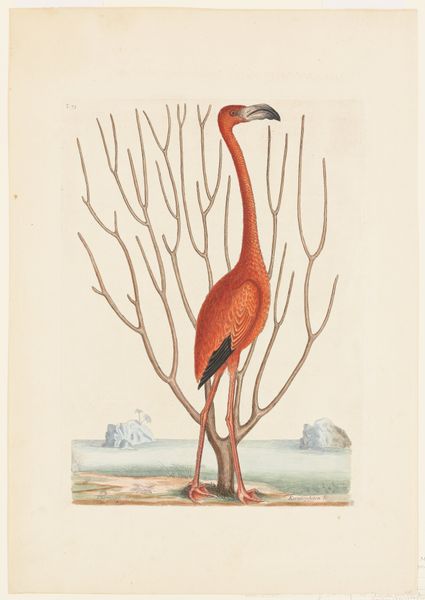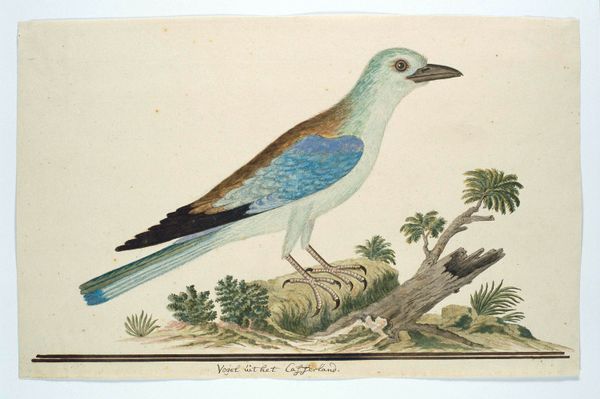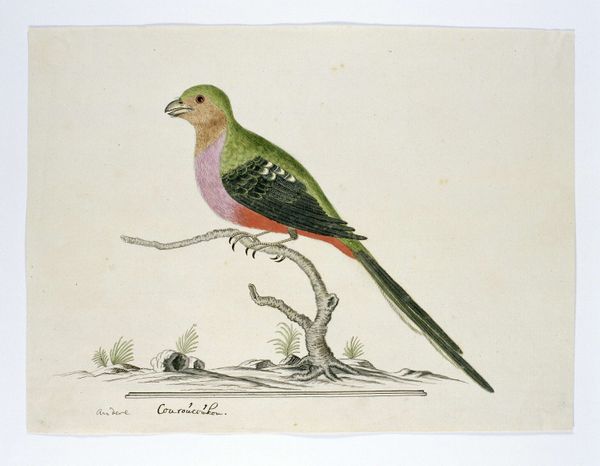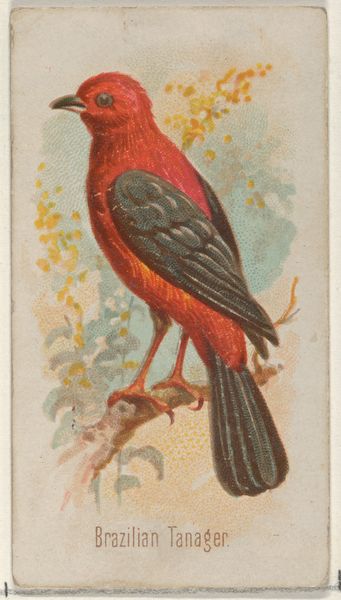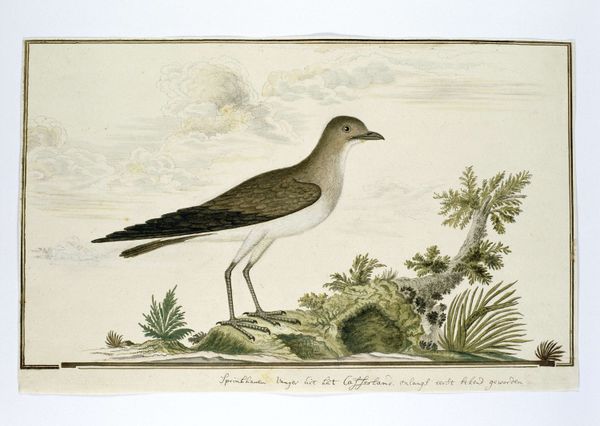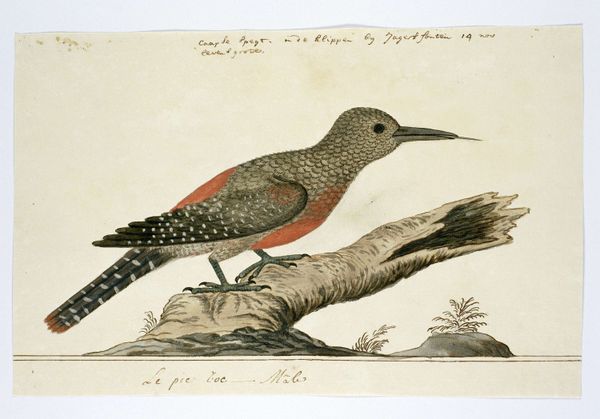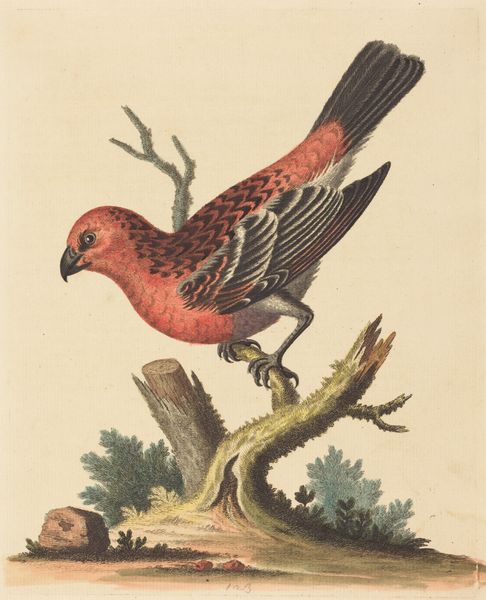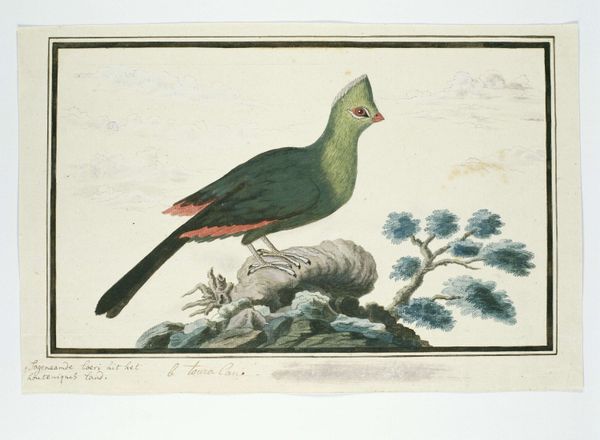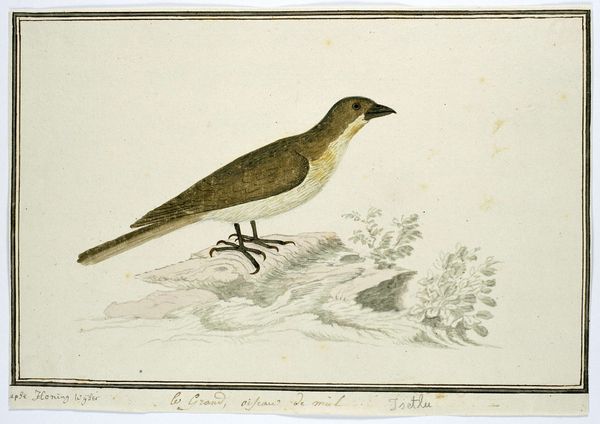
vegetal
toned paper
water colours
handmade artwork painting
botanical drawing
watercolour bleed
watercolour illustration
natural palette
botanical art
watercolor
Dimensions: height 660 mm, width 480 mm, height 272 mm, width 187 mm, height 251 mm, width 171 mm
Copyright: Rijks Museum: Open Domain
John Webber made this watercolor and ink drawing of the Scarlet Hawaiian honeycreeper, or Iiwi, around 1780. As an artist on Captain Cook’s voyages, Webber played a key role in shaping European perceptions of the Pacific. This image participates in the natural history tradition, but also speaks to the politics of exploration. The inscription in Dutch connects the bird to Cook’s voyage. These voyages were as much about scientific discovery as they were about colonial expansion. Webber’s image, therefore, is not a neutral depiction of nature, but an assertion of European dominance. To understand this image fully, we need to consider its place within the broader context of European colonialism and the scientific practices that enabled it. Examining ship logs, botanical records, and indigenous accounts would reveal the complex power dynamics at play. Webber’s Honeycreeper, therefore, provides insight into the intersection of art, science, and empire in the late 18th century.
Comments
No comments
Be the first to comment and join the conversation on the ultimate creative platform.
